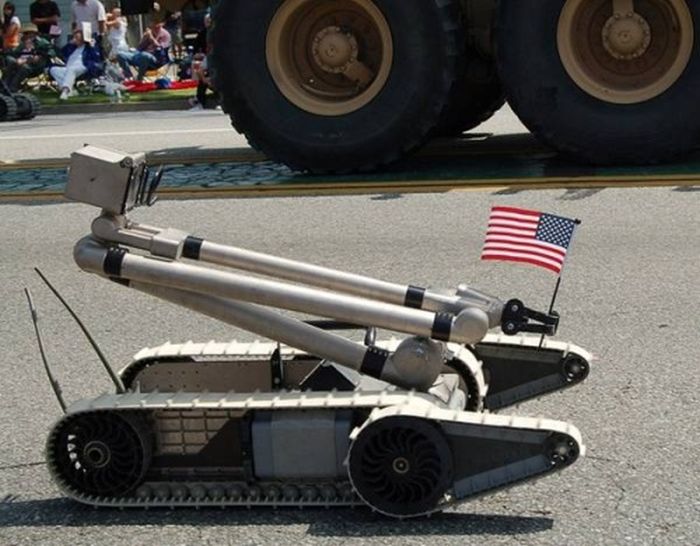|
|
EOD Bomb Explosive Ordnance Disposal Robot
|
Also of great use are items that allow Ammunition technicians to remotely diagnose the innards of a munition or bomb. These include devices similar to the X-ray used by medical personnel, and high-performance sensors that can detect and help interpret sounds, odors, or even images from within the munition or bomb. Once the technicians determine what the munition or device is, and what state it is in, they will formulate a procedure to disarm it. This may include things as simple as replacing safety features, or as difficult as using high-powered explosive-actuated devices to shear, jam, bind, or remove parts of the item's firing train. Preferably, this will be accomplished remotely, but there are still circumstances when a robot won't do, and a technician must put themself at risk by personally going near the bomb. The Technician will don a specialized protective suit, using flame and fragmentation-resistant material similar to bulletproof vests. Some suits have advanced features such as internal cooling, amplified hearing, and communications back to the control area. This suit is designed to increase the odds of survival for the Technician should the munition or bomb function while they are near it.
Rarely, the specifics of a munition or bomb will allow the Technician to first remove it from the area. In these cases, a containment vessel is used. Some are shaped like small water tanks, others like large spheres. Using remote methods, the Technician places the item in the container and retires to an uninhabited area to complete the neutralization. Because of the instability and complexity of modern bombs, this is rarely done. After the munition or bomb has been rendered safe, the Technicians will assist in the removal of the remaining parts so the area can be returned to normal. All of this, called a Render Safe Procedure, can take a great deal of time. Because of the construction of devices, a waiting period must be taken to ensure that whatever render-safe method was used worked as intended. While time is usually not on the EOD Operator's side, rushing usually ends in disaster.
Another technique is Trepanation, in which a bore is cut into the sidewall of a bomb and the explosive contents are extracted through a combination of steam and acid bath liquification of bomb contents.
Although professional EOD personnel have expert knowledge, skills and equipment, they are not immune to misfortune because of the inherent dangers: in June 2010, construction workers in Göttingen discovered an allied 500 kilogram bomb dating from World War II buried approximately 7 metres below the ground. German EOD experts were notified and attended the scene. Whilst residents living nearby were being evacuated and the EOD personnel were preparing to disarm the bomb, it detonated, killing three of them and injuring 6 others. The dead and injured each had over 20 years of hands-on experience, and had previously rendered safe between 600 and 700 unexploded bombs. The bomb which killed and injured the EOD personnel was of a particularly dangerous type because it was fitted with a delayed-action chemical fuze, which had become highly unstable after over 65 years underground.
|
|









